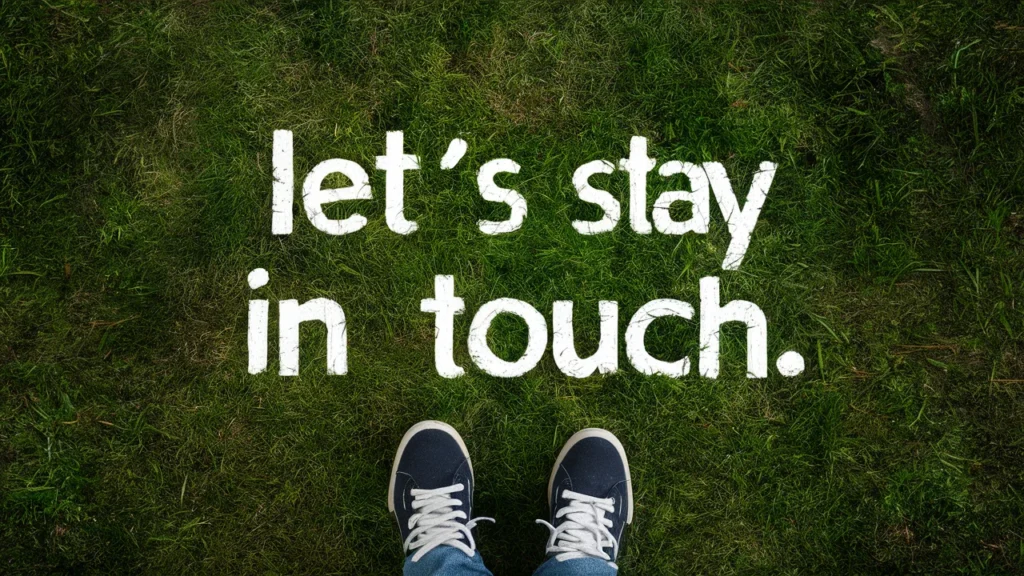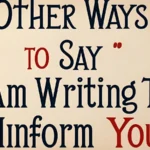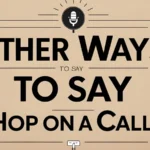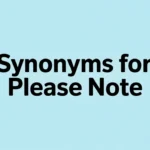We all have those moments when we learn something new and want to acknowledge it. Maybe a friend shares a helpful tip, or a coworker gives you some useful advice. Instead of the usual “Good to know,” why not switch things up? The English language is full of fun and expressive ways to say the same thing while adding a little personality.
The same goes for giving out your contact information. Instead of the robotic “Reach me at this number,” you can make it sound more natural, friendly, or even playful. After all, communication isn’t just about words—it’s about making a connection.
In this article, we’ll explore a bunch of engaging alternatives for both phrases. Whether you want to sound professional, casual, funny, or extra polite, we’ve got you covered. Ready to upgrade your everyday conversations? Let’s dive in!
That’s Useful Information
Ever had a friend tell you something random, like “Did you know turtles can breathe through their butts?” You might not need that info, but it’s still interesting! Instead of just saying “Good to know,” try something like, “That’s useful information.” It works in both serious and lighthearted situations.
Imagine you’re at work, and your coworker tells you about a shortcut in a software program. Responding with “That’s useful information” shows you appreciate their help and might actually use it.
You can also tweak this phrase to match the situation. “That’s really helpful” works when someone shares an actual tip you plan to use. “Oh, that’s handy!” gives off a relaxed, friendly vibe. Whatever the case, swapping “Good to know” for something fresh keeps the conversation natural and engaging.
Read more:Other Ways to Say “As Per Your Request”
Noted!

Sometimes, you don’t need a long response—just a quick acknowledgment that you’ve registered what someone said. “Noted!” is short, simple, and effective. It works perfectly in both casual and professional conversations.
Let’s say your friend warns you that the coffee shop down the street is cash-only. Instead of a dull “Good to know,” you can just say, “Noted!” It keeps things quick and light while still showing you’re paying attention.
It’s also a great way to respond when someone reminds you of an important detail. Your manager says, “The deadline moved to Friday.” A simple “Noted!” lets them know you got the message, no extra fluff needed. It’s straight to the point but still friendly.
That’s Handy!
Have you ever heard a great life hack and thought, “Wow, that’s actually helpful”? Instead of a generic “Good to know,” try “That’s handy!” It sounds natural and adds a bit of enthusiasm.
Picture this: your friend shows you an easy way to peel a stubborn orange. Instead of the usual response, you say, “That’s handy!” It makes you sound engaged and interested.
This phrase also works in practical situations. If someone at work shares a new keyboard shortcut, replying with “That’s handy!” shows that you appreciate the tip. It’s a small change, but it makes your conversations sound more lively and authentic.
Good to Hear
Sometimes, “Good to know” sounds a little flat, especially when someone shares positive news. That’s where “Good to hear” comes in. It’s perfect for situations where someone tells you something reassuring or exciting.
For example, a friend says, “The event is free this weekend!” Instead of a plain “Good to know,” you can say, “Good to hear!” It sounds a bit warmer and more engaged.
It’s also a great choice in professional settings. If a colleague tells you, “The client approved the project,” replying with “Good to hear” shows that you acknowledge and appreciate the news. It’s a simple switch, but it makes your response sound more natural and conversational.
Thanks for the Heads-Up
If someone gives you a useful warning or a heads-up about something, why not thank them for it? “Thanks for the heads-up” is a great way to acknowledge that they just helped you out.
Imagine your coworker tells you that the boss is in a bad mood today. Instead of a boring “Good to know,” responding with “Thanks for the heads-up” shows that you appreciate the tip.
This phrase also works in everyday situations. Your friend tells you the road ahead is closed? “Thanks for the heads-up!” Someone lets you know about a great sale at your favorite store? Same response. It keeps things friendly and natural.
You Can Reach Me Here
When giving out your contact number, you don’t have to say, “Reach me at this number.” It sounds a little stiff, right? Instead, try, “You can reach me here.” It’s simple, smooth, and more conversational.
This works well in both personal and professional settings. If a friend asks for your number, just say, “Yeah, you can reach me here.” If it’s a work-related message, it still sounds professional but not overly formal.
Plus, this phrase is flexible! If you’re sharing an email or social media handle instead, you can still say, “You can reach me here.” It works for all kinds of contact info without sounding robotic.
Hit Me Up at This Number
Want something even more casual? “Hit me up at this number” adds a fun and friendly vibe. It’s perfect for friends, teammates, or anyone you’re cool with.
For example, if you’re planning a group outing and someone asks for your number, replying with, “Hit me up at this number” keeps things light and fun. It’s way more engaging than a plain, “Reach me at this number.”
This phrase works best in informal settings. If you’re texting your boss, maybe go with something more professional. But for friends, family, or casual contacts, it adds a touch of personality to your messages.
Drop Me a Message
Sometimes, you want to give your number without making it sound too serious. “Drop me a message” is a relaxed way to invite someone to contact you.
Picture this: You’re at a party, and someone asks for your number. Instead of saying, “Reach me at this number,” you smile and say, “Yeah, drop me a message!” It feels effortless and natural.
This phrase works well in both casual and professional settings. If a colleague asks how to follow up on a project, “Drop me a message” sounds approachable yet professional. It’s the perfect balance between friendly and efficient.
Appreciate the Info
Sometimes, a simple “thank you” goes a long way. Instead of saying “Good to know,” you can say, “Appreciate the info!” It’s short, friendly, and shows gratitude.
Imagine a coworker tells you, “The office is closing early on Friday.” Instead of a dry “Good to know,” saying “Appreciate the info!” makes you sound more engaged. It’s like a mini high-five in words!
This phrase works in all kinds of situations—whether you’re thanking a friend for a fun fact or a colleague for an important update. It keeps things casual while still being polite. Bonus? It also encourages people to share more helpful info with you in the future!
Got It!
Sometimes, you just need to acknowledge something quickly. “Got it!” is a simple and natural way to do that. It works in both professional and casual conversations, making it a great alternative to “Good to know.”
Let’s say your friend texts you, “Hey, dinner is at 7, not 6.” Instead of saying, “Good to know,” just reply with, “Got it!” It keeps the conversation flowing smoothly.
This phrase is also perfect in work settings. If your manager says, “The meeting is moved to Thursday,” replying with “Got it!” shows you’re paying attention. No extra words needed!
That’s Interesting!
Ever hear something that makes you pause and think? Instead of a plain “Good to know,” try saying, “That’s interesting!” It shows curiosity and keeps the conversation going.
For example, a friend tells you, “Bananas are actually berries, but strawberries aren’t.” Instead of just nodding, saying “That’s interesting!” makes the conversation more engaging.
It also works in more serious settings. If a coworker shares a new strategy, replying with “That’s interesting!” shows you’re open to new ideas. It’s a great way to keep things interactive without sounding too passive.
Oh, That’s Helpful!
When someone gives you genuinely useful information, “Oh, that’s helpful!” is a great way to show appreciation. It’s warmer and more engaging than “Good to know.”
Imagine you’re at a grocery store, struggling to pick a ripe avocado. A stranger gives you a tip: “The darker ones are usually softer.” Instead of just saying, “Good to know,” replying with “Oh, that’s helpful!” makes it feel like you truly appreciate the tip.
It also works in work settings. If a coworker shares an Excel trick that saves you time, responding with “Oh, that’s helpful!” encourages more knowledge-sharing. People love feeling helpful!
Thanks for Letting Me Know
If someone shares something important with you, why not thank them for it? “Thanks for letting me know” is a thoughtful alternative to “Good to know.”
Picture this: Your roommate says, “Hey, the water heater is acting up again.” Instead of a plain “Good to know,” saying “Thanks for letting me know” shows you actually appreciate the heads-up.
This phrase is also great for work. If a colleague informs you about a last-minute change, a quick “Thanks for letting me know” keeps the conversation positive and professional. It’s a simple but powerful tweak!
You Can Always Call Me Here
When giving out your number, you don’t have to sound like an automated message. “You can always call me here” makes it sound more personal and welcoming.
Imagine a friend asks for your number to stay in touch. Instead of “Reach me at this number,” saying, “You can always call me here” makes it sound like you genuinely want to hear from them.
This phrase also works in professional settings. If you’re giving your number to a new client, “You can always call me here” feels friendly but still business-appropriate. It’s a simple way to keep things warm and engaging.
Feel Free to Text Me
Want to keep things casual? “Feel free to text me” is a laid-back way to share your number without sounding stiff. It invites conversation instead of just giving information.
For example, if you’re making weekend plans with a friend, saying, “Feel free to text me if anything changes” keeps it friendly. It’s more inviting than “Reach me at this number.”
This works well in networking situations, too. Instead of sounding overly formal, “Feel free to text me if you need anything” makes you sound approachable and open.
Just Shoot Me a Message
If you want to sound extra relaxed, “Just shoot me a message” is a fun alternative to “Reach me at this number.” It’s casual, friendly, and makes texting feel effortless.
Let’s say a coworker asks for your number to coordinate a project. Instead of sounding robotic, saying, “Just shoot me a message if you need anything” makes you sound cool and approachable.
This phrase also works with friends and family. If your cousin wants to confirm dinner plans, “Just shoot me a message when you’re on your way” keeps things light and conversational.
Catch Me on This Number
Sometimes, you want to keep things simple but still sound natural. “Catch me on this number” is a great alternative to “Reach me at this number.” It sounds more relaxed and engaging.
For example, if a friend asks how to contact you, instead of the usual response, say, “Yeah, catch me on this number if you need me.” It keeps things smooth and effortless.
It also works well in professional settings. If a colleague needs to follow up, “You can catch me on this number if anything comes up” sounds warm while still being business-friendly.
Give Me a Ring
Want to sound friendly and old-school? “Give me a ring” is a charming alternative to “Reach me at this number.” It’s perfect for informal conversations with friends and family.
Imagine your best friend asks how to reach you before a big event. Instead of saying, “Reach me at this number,” saying “Give me a ring if you need anything” makes it sound more personal.
This phrase is best for casual use. If you’re talking to a client, something like “Feel free to call me” might be a better fit. But among friends? “Give me a ring” is a fun and friendly go-to!
Reach Out Anytime
If you want to sound welcoming and open, “Reach out anytime” is a great alternative to “Reach me at this number.” It makes people feel comfortable contacting you.
For example, if a colleague needs help on a project, saying, “Reach out anytime if you have questions” makes you sound approachable and supportive.
This phrase also works in personal conversations. If a friend is going through a tough time, “Reach out anytime if you need to talk” lets them know you’re there for them. It’s a warm, thoughtful choice.
Let’s Stay in Touch

When giving out your number, sometimes you want to emphasize the importance of keeping in contact. “Let’s stay in touch” is a great way to do that.
If you meet someone at a networking event and want to keep the conversation going, instead of just giving your number, say, “Here’s my number—let’s stay in touch.” It makes the exchange feel more meaningful.
This phrase works well in both casual and professional settings. Whether you’re reconnecting with an old friend or sharing your contact info at work, “Let’s stay in touch” makes it sound warm and intentional.
Conclusion
Everyday conversations don’t have to be dull! Whether you’re responding to useful information or sharing your contact details, small tweaks can make a big difference.
Swapping “Good to know” for “That’s handy!” or “Appreciate the info” keeps your conversations engaging. And instead of “Reach me at this number,” try “Feel free to text me” or “You can always call me here” to make it more natural.
By using these alternatives, you’ll sound more warm, approachable, and engaging in any situation. So, why not switch things up and see how people respond? You might be surprised at how much better your conversations flow!

Ashley Bennett, a language enthusiast at WordSeekerz.com, simplifies English grammar and vocabulary with a fun, engaging approach. She helps readers expand their vocabulary, improve writing, and master synonyms effortlessly. Explore more at WordSeekerz.com!










